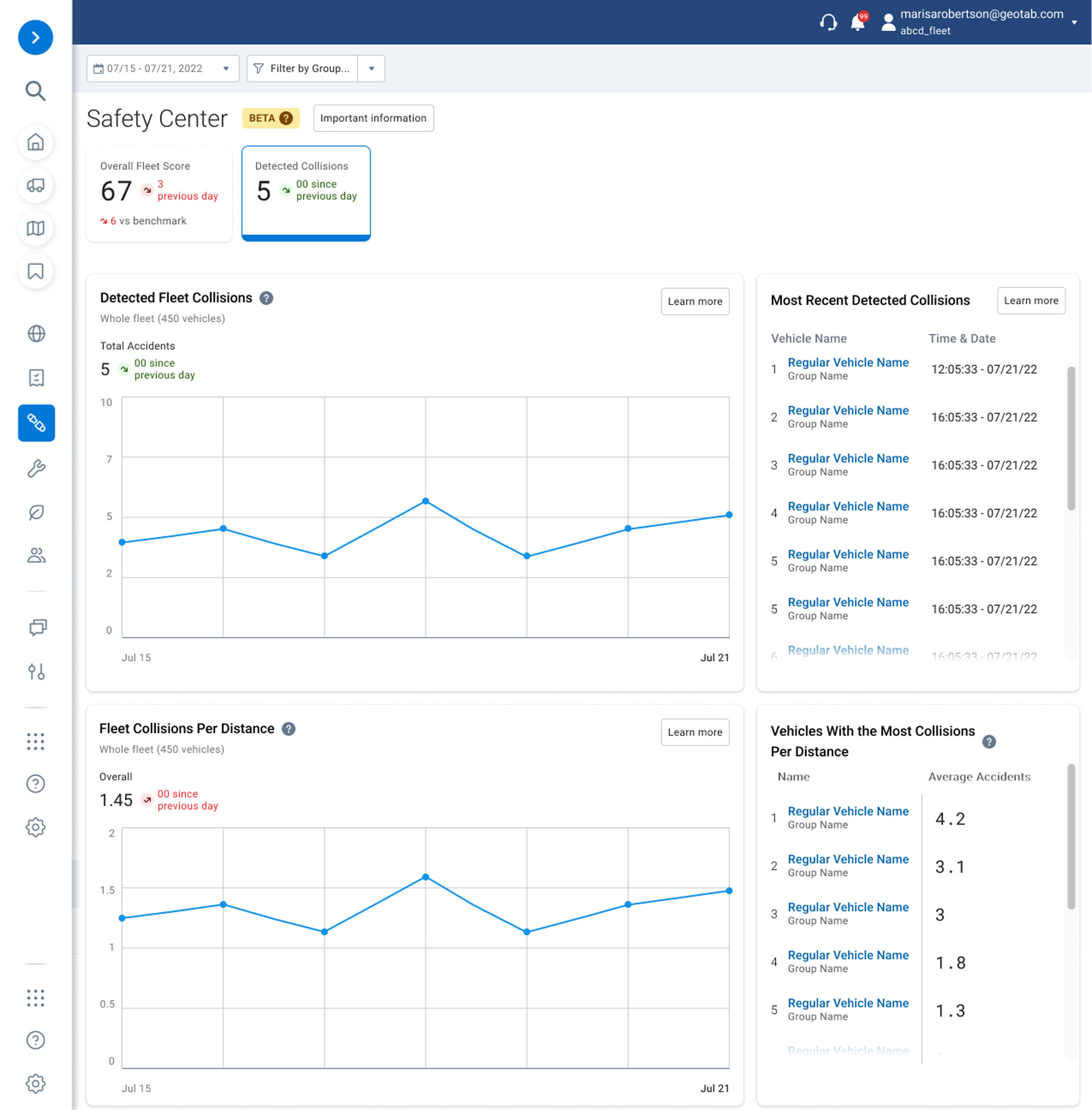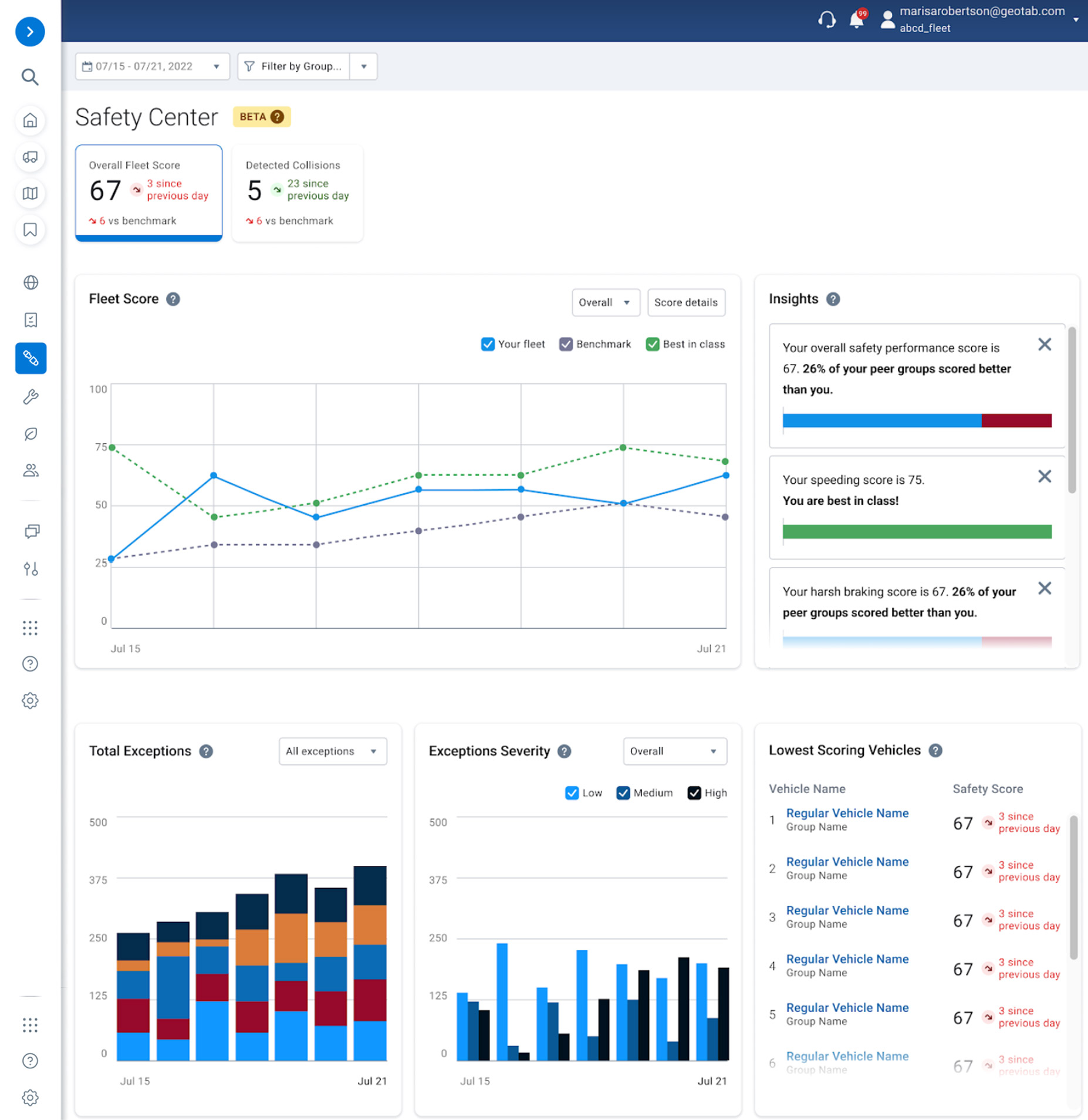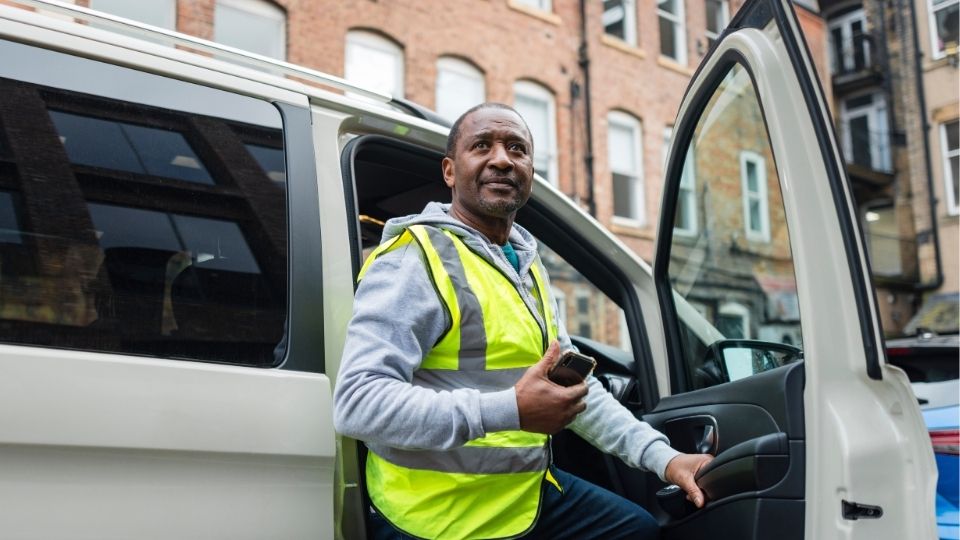Driver Training & MVR's: Just a Piece of the Safety Puzzle
Go beyond motor vehicle record reports and generalized driver training. Learn the importance of creating a more comprehensive safety program for your light-duty fleet.

.jpg)
Imagine this – you're a leader at your company and looking to hire a new employee for your team. After a rigorous interview process, you find someone that's a great fit. They’re motivated and talented, so you decide to hire them. Normal background checks are done and they’re ready to start their new role. Now let’s zoom out for a second and imagine from this point on that their job performance, quality of work and work habits are never measured again. Surprisingly, a lot of fleets operate in this exact way.
This scenario begs the question, how can fleet managers be more proactive about tracking risky driver behavior and overall fleet safety? Fleets that haven't yet adopted telematics for their vehicles typically rely on a combination of regular MVR checks and driver training as the foundation of their fleet safety program – let's talk about how fleets can go beyond these tools to help bolster fleet safety.
What are MVR checks and Driver Training?
MVR checks are typically conducted on drivers when they are first hired and then periodically thereafter. The frequency of these checks depends on the organization's policies or local regulations. They can also be done at random, especially for drivers who have a history of violations or accidents.
A MVR check provides information related to a driver's driving history, including:
- Accident reports, both at-fault and not-at-fault
- Traffic violations
- License suspensions, including DUIs/DWIs
- Vehicular crimes
- Lost driving record points
A typical fleet driver safety training program includes various components that promote safe driving practices and minimize risks for drivers operating fleet vehicles – like safe operating procedures, traffic laws and regulations, defensive driving techniques and more.
Are they enough to guarantee driver safety?
While MVR checks and driver training are important parts of an overall fleet safety policy, they provide very little insight into how a vehicle is being operated the majority of the time. Similarly, standardized driver training typically focuses on educating drivers about safe driving practices, but it can be difficult to measure the effectiveness of training and make sure that drivers are applying what they've learned.
Take, for example, a driver that is constantly braking or accelerating harshly. While these aren’t ticketable offenses that would show up in a MVR, a study published in the Journal of Safety Research found that harsh braking is significantly correlated with future crash involvement. The study also found that drivers with a higher number of harsh braking and other harsh driving events were also more likely to be involved in future crashes.
Clearly, harsh braking and other aggressive driving behaviors are predictive indicators of an accident – which MVR checks and training can't capture or measure – so, it’s clear that a corporate fleet safety program without telematics will struggle to consistently reduce collision rates or change behavior.
Using telematics to analyze driver behavior
Instead of relying on a limited snapshot of a driver’s history, implementing telematics can help you analyze driver behavior holistically to give you the most comprehensive safety picture. According to NHTSA, 10% of fleet drivers cause 40% of the accidents which means it’s crucial to understand what percentage of your fleet is classified as “high-risk”. This involves setting up specific rules to measure behaviors such as harsh braking, cornering, speeding, rapid acceleration and seat-belt use, to create an exception whenever a driver exhibits these behaviors. By measuring the frequency and severity of these events, you’ll be able to understand what the safety truth is for your fleet so you know exactly where to focus your safety initiatives to make the most impact.
A driver safety scorecard is a valuable tool that will help surface your highest and lowest performing drivers to pinpoint who within your fleet might need extra training, coaching or to inform future training sessions. With telematics, it’s also easier to track how well your fleet is doing compared to fleets of similar size and industry.
Safety benchmarking is another great way to see how your safety scores are trending compared to fleets of similar makeup. Utilizing a telematics solution that has a rich data ecosystem to pull from will help make sure that you’re getting accurate and actionable information to help you develop a fleet safety program that drives consistent improvement.


Promote positive reinforcement through driver coaching
Giving your drivers feedback about their driving and actively involving them in ways to become better will help make sure they’re representing you well on the road. A great way to involve your drivers in safety initiatives is through gamification – the process of applying characteristics typical of games to ordinary tasks to encourage drivers and keep them engaged. This can take the form of a weekly leaderboard of your safest drivers, or offer rewards for drivers who hit certain safety goals for the fleet. Another way to create a positive safety culture is through timely training based on their individual needs. Telematics can help you monitor on-road performance, behavior and habits to give you a better understanding of what each of your specific drivers needs in terms of training.
Once you’ve started to see positive safety impacts, it’s critical to understand how well your fleet is doing compared to fleets of similar size and industry. Benchmarking is a great way to see how you compare to your competition, so utilizing a telematics partner that has a rich data ecosystem for peer-comparison will ensure you’re getting accurate and actionable information to help you develop a powerful safety program.
Telematics for safety creates ROI
While some see telematics for safety as an added expense, a brief look at the numbers tell a very different story. Primary and secondary research indicates that implementing telematics can reduce collisions by 20% to 45%. The amount of ROI you may realize varies based on fleet size, vehicle type, miles driven, the current level of safety performance and an organization's commitment to foster a positive safety culture. It’s clear however that telematics has a significant positive impact on fleet safety which creates ROI.
The average annual collision rates for commercial fleets in the U.S. are at 20% with some industries like pharmaceuticals having even higher rates. According to NHTSA, the average cost of an accident to an employer is $16,500 and over $500,000 when a fatality occurs. Using these assumptions, a fleet with 1,000 vehicles reducing their annual collision rate by a modest 20% would create $666,000 in realized savings, a figure much higher than the investment in telematics. In addition to accident reduction, companies may also see other financial benefits such as reduced insurance premiums, lower legal fees, and improved public perception of their brand.
Corporate boardrooms across the globe constantly discuss the need to improve safety and how to protect their most valuable assets, their people, but too often fail to make the easy investment needed to do it. The case for fleet safety is clear and there is no greater decision you can make than the one to protect your people.
Learn more about light-duty fleet safety
If you want to learn more about how telematics can support a more robust and comprehensive safety program, get in touch with one of our experts today for a free demo.
Subscribe to get industry tips and insights

Zach Crocombe is the Senior Business Development Manager, Field Services at GEOTAB
Table of Contents
Subscribe to get industry tips and insights
Related posts

Field service is losing money to bad data: Go beyond GPS with smarter telematics
June 27, 2025
3 minute read


The fleet safety incentive program checklist for driver engagement that lasts
June 19, 2025
2 minute read

Building a self-sustaining school bus driver safety program with Geotab Vitality
June 13, 2025
7 minute read

Small Steps, Big Impact: The Transformative Power of AI in Field Service
June 11, 2025
2 minute read
